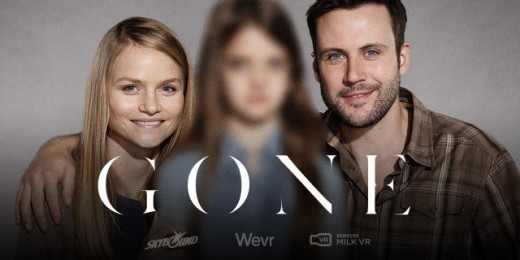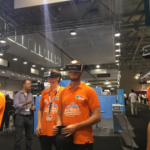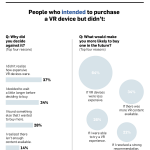Samsung Launching Interactive, “Exploratory” VR Thriller For The Gear VR
Gone will be released in 5- or 6-minute episodes over the coming months, and presents viewers with the chance to ‘investigate’ a fictional crime.
As Samsung gears up for the first-ever holiday shopping season with the consumer version of its Gear VR virtual reality headset on the market, it knows that great content is the key to attracting users and keeping them engaged.
Every week, Samsung and a wide, and growing, range of partners, are releasing new content for the Gear VR, the company’s mobile virtual reality headset. And now the company has unveiled perhaps its most ambitious VR effort yet, a new interactive serial virtual reality “thriller” called Gone that will soon appear in Samsung’s official Milk VR channel on the Gear VR, with five- to six-minute episodes rolling out intermittently over the next few months.
Ensuring that there’s enough quality content is key as consumers begin to evaluate whether to buy devices like the Gear VR, which hit the market last month, or the higher-end Oculus Rift, HTC Vive, or Sony PlayStation VR, each of which is expected to be commercially available next year. Virtual reality is expected to be a $30 billion industry by 2020, while VR content alone is predicted to be a $5.4 billion business by 2025.
Directed by video game veteran J.T. Petty, Gone takes viewers into the dramatic story of Meredith Clover, a mother desperate to find her missing 9-year-old daughter, Emilia, who disappeared from a crowded playground in broad daylight.
The concept for the project, explained executives from Samsung, the media company Skybound Entertainment—of The Walking Dead fame—and VR production company WEVR, was to present Gone‘s audience with a way to look deeper into the story by investigating individual clues that are scattered throughout the production. “Visitors won’t solve the mystery of Gone without exploring all of its darker corners,” a Gone publicity synopsis reads.

Samsung wanted to “push storytelling, and also app innovation forward,” said Matt Apfel, vice president of strategy and creative content at Samsung Media Solutions Center America, during a press preview of Gone. “Where we landed was that the notion shouldn’t just be about being a fly on the wall.”

One of the biggest challenges to implementing this notion is that the Gear VR doesn’t offer positional tracking—a technology found in higher-end VR systems like the Oculus Rift or HTC Vive that can track where a user is in physical space.
Practically speaking, that means that throughout Gone, viewers are frequently presented with what are called “hotspots.” As the story unfolds chronologically, each of the hotspots appears for a short period of time, and when clicked on, reveals a clue about the mystery of Emilia’s disappearance.
“You’re being challenged by the things in front of you,” Apfel said. “That’s a completely different viewing experience.
Or, as Rachel Skidmore, Skybound’s director of media development and production, put it, “We wanted [you] to participate, and to build suspense, which comes from your own investigation.”
Because the hotspots go away after a few seconds, it’s likely that not all viewers will be able to look at each one in chronological order. That means, Samsung and its partners hope, that users will end up watching each episode of Gone multiple times.
Samsung believes Gone represents a new form of VR storytelling, at least for content produced for mobile devices. Asked about about the learning curve for viewers trying out Gone, Apfel said, “It’s steep. We’re asking a lot of” viewers.
[Images: courtesy of Samsung Milk VR]
Fast Company , Read Full Story
(9)














